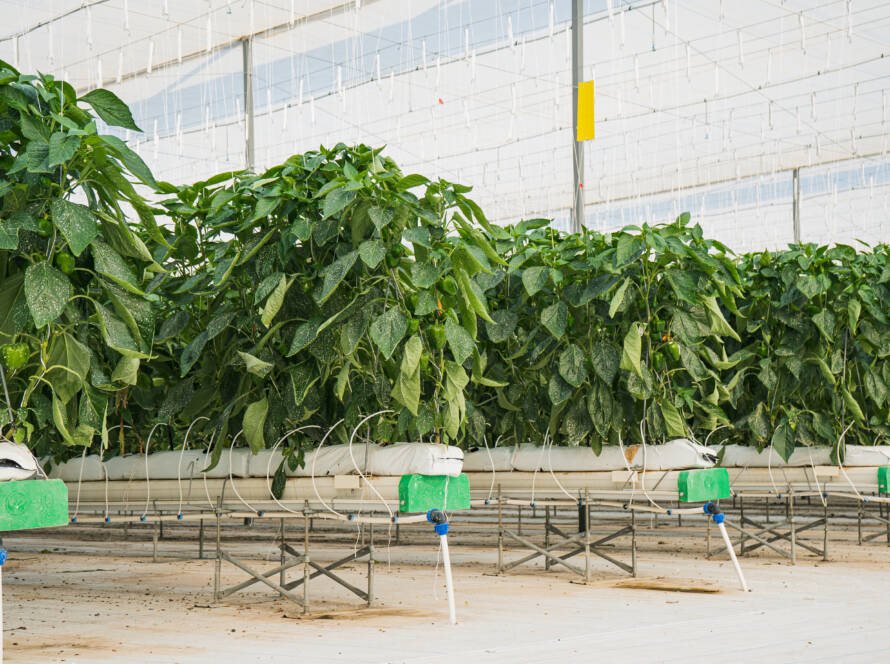In the arid regions of the Middle East and Africa, farmers are facing a number of challenges, including extreme temperatures, scarce water resources, and pests and diseases. These challenges are making it increasingly difficult to produce food in a sustainable way.
Retractable cooling roof systems (RCRSs) are emerging as a game-changer for sustainable agriculture in these regions. These systems are designed to provide a controlled environment for crop cultivation, which can help to mitigate the effects of extreme weather, reduce water usage, and protect crops from pests and diseases.
What Are Retractable Cooling Roof Systems?
RCRSs are a type of greenhouse that has a roof that can be opened or closed as needed to regulate temperature and protect crops from adverse weather conditions. These systems are particularly well-suited for regions with extreme temperatures and scarce water resources, making them a valuable tool for sustainable agriculture.
Why Are Retractable Cooling Roof Systems Important?
Retractable cooling roof systems offer a number of advantages for farmers in the Middle East and Africa, including:
- Maximized harvest potential: By providing a controlled environment, RCRSs can help to maximize harvest potential. This is because the systems can be used to regulate temperature and humidity, which are two of the most important factors for crop growth.
- Consistent yields: RCRSs can also help to ensure consistent yields, even in the face of unpredictable weather conditions. This is because the systems can be used to protect crops from extreme heat, cold, rain, and wind.
- Superior fruit quality and extended shelf life: RCRSs can also help to produce fruits and vegetables with superior quality and extended shelf life. This is because the systems can be used to create an ideal environment for crop growth, which results in healthier and more flavorful produce.
- Reduced water usage: RCRSs can help to reduce water usage by up to 50%. This is because the systems can be used to trap heat and humidity, which can then be used to water the crops.
- Protected from pests and diseases: RCRSs can help to protect crops from pests and diseases by creating a barrier that prevents them from entering the system. This can help to reduce the need for pesticides and other chemicals, which can be harmful to the environment.
RCRSs and the UAE Vision for Sustainable Development Goals (SDG2030)
Retractable cooling roof systems are aligned with the UAE Vision for Sustainable Development Goals (SDG2030), specifically SDG2: Zero Hunger. By reducing water usage and protecting crops from pests and diseases, RCRSs can help to improve food security and sustainability in the region.
Case Studies
A study by the FAO found that RCRSs [1] can increase tomato yields by up to 40% and reduce water usage by up to 50%.
In the Middle East, RCRSs are being used to grow a variety of crops, including strawberries, tomatoes, and cucumbers.
In Africa, RCRSs are being used to grow a variety of crops, including tomatoes, peppers, and beans.
Endorsements
FAO and ICARDA [2], two organizations with a shared mandate to improve food security and livelihoods in arid regions,endorse RCRSs.
Innovations Transforming Agriculture in Arid Region
FAO and ICARDA believe that RCRSs have the potential to transform agriculture in arid regions. By providing a controlled environment for crop cultivation, RCRSs can help to mitigate the effects of extreme weather, reduce water usage, and protect crops from pests and diseases. This can lead to increased crop yields, improved food security, and sustainable livelihoods for farmers in arid regions.
Conclusion
In conclusion, retractable cooling roof systems (RCRSs) offer a promising approach to overcoming some of the difficulties that farmers face. Having a regulated and protected environment with changeable roofs can considerably increase the sustainability and productivity of agriculture in difficult regions.
Aside from enhancing harvest potential and guaranteeing regular yields in the face of variable weather, RCRSs also enhance fruit and vegetable quality, help prolong shelf life, and use less water. Additionally, RCRSs serve as a barrier against diseases and pests, decreasing the need for chemicals and pesticides and helping to conserve the environment.
If you are a farmer, I encourage you to learn more about RCRSs. These systems can help you to improve your yields, reduce your water usage, and protect your crops from pests and diseases. Contact Elite Agro Projects today for more information.
References
- Hydroponic Production of Tomatoes (Lycopersicon esculentum) in the United Arab Emirates. Food and Agriculture Organization of the United Nations.
https://sciresol.s3.us-east-2.amazonaws.com/IJST/Articles/2014/Issue-8/Article6.pdf - Hydroponic Farming in the Middle East: A Review. Emirates Journal of Food and Agriculture, Volume 31, Issue 2, 2019. https://www.farmerp.com/what-makes-hydroponics-a-viable-agriculture-strategy-in-the-middle-east
- Hydroponics in Africa: A Review of Challenges and Opportunities. Journal of Applied Horticulture, Volume 23, Issue 1, 2021. https://www.linkedin.com/pulse/impact-challenges-hydroponic-farming-africa-nesphory-mwambai
- FAO and ICARDA Endorse Hydroponics as a Solution to Food Security Problems in Arid Regions. Food and Agriculture Organization of the United Nations. https://www.outlookindia.com/website/story/arid-regions-take-to-innovative-farming-with-fao-support/375225
- Hydroponics: A Sustainable Solution for Food Security in Arid Regions. International Center for Agricultural Research in the Dry Areas. https://ncrc.org/hydroponic-farming-as-a-solution-to-systemic-food-insecurity/
- The Future of Farming in Arid Regions: Innovations in Hydroponics and Other Controlled Environment Agriculture Systems. Journal of Arid Environments, Volume 99, 2020. https://www.outlookindia.com/website/story/arid-regions-take-to-innovative-farming-with-fao-support/375225




